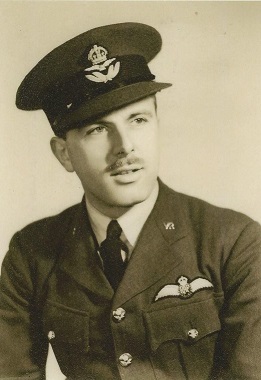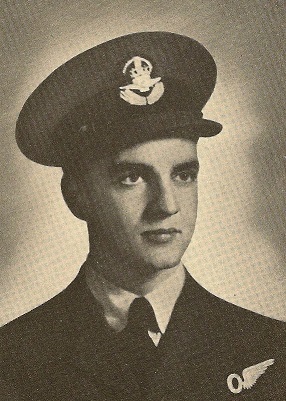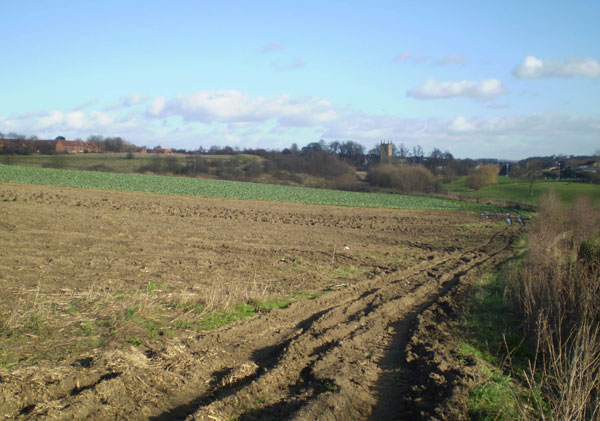Anson AW939 at Rothwell, Leeds.
During the evening of the 22nd November 1941 the crew of this "C-Flight" 25 Operational Training Unit aircraft were tasked with undertaking a cross country training flight. The aircraft took off at 18.35hrs, believed to have been from Finningley airfield where 25 O.T.U. was based though it may have been from their satellite airfield of Bircotes. During the flight the aircraft entered low cloud and the radio set later failed. Having become lost the crew had not found anywhere to land by the time the aircraft eventually ran low on fuel. The pilot ordered the crew to bail out which was done so at 4,500 feet over the Lofthouse area, to the north of Wakefield. The aircraft flew on for a short distance before crashing at around 22.45hrs onto an area of land known locally as The Pastures, close to Rothwell, between Leeds and Wakefield. The crew landed nearby in the Lofthouse area and one sustained minor injuries where he was treated by a local doctor.
Anson AW939 was built to contract B.137211/40 by A.V.Roe & Co. Ltd., at Newton Heath and was awaiting collection in September 1941. It was taken on charge shortly after this by 25 Operational Training Unit at Finningley but the date it arrived is not yet known. As a result of the incident on 22nd November 1941 Cat.E2/FA damage was recorded on the paperwork and the aircraft was struck off charge.
Pilot - P/O Theodore Arthur Lumb RAFVR (61284).
Pilot - Sgt J B Ashbourne RCAF (R/78213), of Toronto, Ontario, Canada.
Observer - P/O Joseph Frederic Chevalier RCAF (J/6653), of Montreal, Quebec, Canada.
Observer - Sgt William Chesin Howell RCAF (R/78468), of Toronto, Ontario, Canada.
Wireless Operator / Air Gunner - Sgt Hugh Dracass RAFVR (1112246), of Hagworthingham, Lincolnshire.
Theodore Lumb was born in Surbiton, Surrey on 24th December 1913, he had married Gwendoline Dolores Fisher in Kensington, London in 1939 and they had two children. He was awarded his Wings at Cranwell on 14th February 1941 and received a commission to P/O on probation two days later. He served with 49 Squadron prior to posting to 25 O.T.U.. At the time of baling out of Anson AW939 in November 1941 he had flown a total of nineteen hours in the Anson and a grand total on all aircraft of 107 hours. While in the rank of F/O he was later posted to 83 Squadron and was lost on 28th / 29th March 1942 flying in Manchester R5781 on Ops to Lubeck. He is now buried in Kiel War Cemetery. The photograph of him shown above was found on Facebook.
A fantastic photograph of Hugh Dracass. The logbook entry for Anson AW939 and him baling out states the nature of the flight to have been a "Raid 25/05". With training complete he was posted to 61 Squadron, probably on 3rd March 1942. I thank his great nephew Mr Matthew Willis for kindly contacting me in March 2022 and supply some brilliant information and photographs relating to his uncle.
Joseph Chevalier was born on 21st February 1921 to Armand and Marguerite (nee Forget) Chevalier in Montreal, Quebec, Canada. He was educated at Selwyn House School, Montreal and was then to cross the Atlantic and attended Ampleforth College, Yorkshire, England. He then returned to Canada and in 1938 began working in banking in Quebec prior to enlisting for RCAF service. He enlisted on 15th November 1940 in Montreal and after training was awarded the air observer's flying badge on 8th July 1941. A short time later he received a commission on 5th August 1941. He left Canada for service in the UK shortly after and arrived at 25 O.T.U. on 21st October 1941. With training complete he was posted to 61 Squadron on 3rd March 1942.
Both Hugh Dracass and Joseph Chevalier remained in the same crew at 61 Squadron. On 29th / 30th March 1942 both was flying in Manchester L7454 on a mine laying flight when the aircraft failed to return and both are commemorated on the Runnymede Memorial. Ironically their loss occurred only one day after Theodore Lumb's, their pilot in the Rothwell incident. Sgt Dracass and P/O Chevalier were both twenty one years old.
In summer 2008 aviation historian and local to the Rothwell area, Mr Albert Pritchard, spent some time in the Rothwell
area enquiring as to the rough location of where AW939 came down. I was invited along to search the area with Albert, Ken Reast, Eric Barton
and Michael Hough. The search was partly a success in that we located at least one peice of the aircraft in a reasonably large field.
Part of the field still had crops on so this was out of bounds for any search but combined with witness accounts it confirmed the
location. I thank the Oldroyd family for allowing our visit. The search also yielded many buttons, marbles and other bits of metal
later identified as irrigation piping. The marbles were interesting finds, when fashionable from the 1920's onwards local school
boys would fire them from catapults and at least one of our witnesses to the aircraft incident also recounted using The Pastures
as the target for these marbles.
The area of where AW939 came down.
The photograph above shows the only confirmed part of the aircraft found during my visit in 2008, a piece of cast alluminium
from the engine block.


Sgt William Howell would later survive the crash of Manchester L7478 near Bawtry on 10th February 1942. He completed his training and was posted to 61 Squadron.
He was flying in Lancaster R5562 on Ops to Essen on the night of 2nd / 3rd June 1942 when the aircraft crashed in Germany, Sgt Howell was the sole survivor and he became a PoW.
I dearly would like to properly identify J.B.Ashourne, of Toronto who delivered newspapers before enlisting for RCAF service. Please help.


